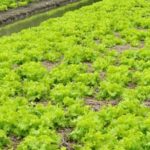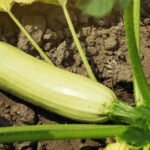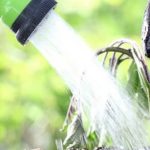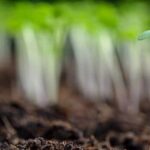Located in the heart of the South, East Texas is a region known for its rich soil, warm weather, and vibrant flora. Amidst the lush landscapes and charming towns, a growing community of vegetable gardeners has emerged, bringing creativity to their plots and reaping bountiful harvests. In this article, we will delve into the world of creative vegetable gardening in East Texas, exploring the unique climate and soil conditions that shape the resident gardener’s approach.
We will also uncover innovative techniques for maximizing limited space, embracing diversity with native and uncommon vegetables, composting kitchen scraps for nutrient-rich soil, and even crafting homemade structures to enhance these gardens. Whether you’re a seasoned gardener or eager to embark on your first veggie-growing adventure, let us inspire you with our exploration of creative vegetable gardening in East Texas.
In order to thrive as a vegetable gardener in East Texas, it is crucial to understand the unique climate and soil conditions that define the region. The hot summers and mild winters create an environment suitable for a wide range of vegetables, from heat-loving plants like tomatoes and peppers to cool-season crops like lettuce and broccoli.
Additionally, the acidic clay soils common in many parts of East Texas require specific strategies for success. By tailoring gardening techniques to suit these conditions, aspiring gardeners can unlock their full potential and achieve impressive yields.
One key aspect of successful vegetable gardening in East Texas lies in selecting the right plants for the local environment. With countless options available, it can be overwhelming to choose which vegetables are best suited to thrive in this region.
Factors such as heat tolerance, disease resistance, and adaptability to varying soil types should all be taken into consideration when making these decisions. By carefully planning their vegetable selections based on these criteria, gardeners can ensure healthy plants that are better equipped to withstand any challenges that may arise throughout the growing season.
Stay tuned as we dive deeper into each section of this article, delving into the specifics of maximizing limited space, utilizing innovative container gardening methods, incorporating native and uncommon vegetables, and mastering the art of creative composting. East Texas vegetable gardens hold the potential for both vibrant beauty and abundant harvests, and by embracing creativity in our gardening practices, we can truly unlock their full potential.
So let’s roll up our sleeves and get ready to explore the captivating world of creative vegetable gardening in East Texas.
Understanding the Unique Climate and Soil Conditions in East Texas
East Texas is known for its unique climate and soil conditions that can greatly impact vegetable gardening. It is important for gardeners in this region to gain a deep understanding of these factors in order to maximize the success of their gardens.
Firstly, the climate in East Texas is characterized by hot and humid summers, mild winters, and ample rainfall throughout the year. These climatic conditions provide both opportunities and challenges for vegetable gardening. On one hand, the long growing season allows for a wide variety of vegetables to be grown.
On the other hand, the high humidity can create a favorable environment for pests and diseases. Therefore, it is essential for East Texas gardeners to choose vegetable varieties that are well-suited to this climate.
Secondly, the soil in East Texas can vary greatly depending on the specific location within the region. While some areas may have rich, fertile soil, others may have sandy or clayey soil that requires additional amendments. Conducting a soil test is recommended to determine its pH level and nutrient content. Adding organic matter such as compost or well-rotted manure can help improve the overall fertility and structure of the soil.
| Climate | Soil Conditions |
|---|---|
| Hot and humid summers | Variation in soil types (rich, sandy, clayey) |
| Mild winters | Possible need for amendments |
| Ample rainfall throughout the year | Potential variation in pH levels |
By understanding the unique climate and soil conditions in East Texas, gardeners can make informed decisions when selecting vegetables to grow and implementing appropriate gardening practices. With this knowledge, they are better equipped to create successful and fruitful vegetable gardens in the region.
Choosing the Right Vegetables for Success in East Texas
When it comes to vegetable gardening in East Texas, one of the keys to success is choosing the right vegetables that can thrive in the unique climate and soil conditions of the region. With its hot and humid summers, mild winters, and clay-heavy soil, East Texas presents some challenges for vegetable growers. However, with careful selection and planning, it is possible to have a bountiful harvest.
When choosing vegetables for your East Texas garden, it is important to consider their heat tolerance and disease resistance. Some vegetables that are well-suited for this region include tomatoes, peppers, okra, sweet potatoes, black-eyed peas, and southern peas. These warm-season crops not only tolerate the hot temperatures but also do well in the nutrient-poor clay soils commonly found in East Texas.
Additionally, cold-hardy vegetables that can be planted during the mild winters are also a good option. These include leafy greens like spinach, kale, and lettuce as well as root vegetables like carrots and radishes. By planning your garden to include both warm-season and cool-season crops, you can enjoy fresh produce throughout the year.
To further enhance your chances of success in East Texas vegetable gardening, consider using techniques such as raised beds or container gardening. Raised beds provide better drainage and allow you to add compost or other organic matter to improve the soil structure. Container gardening is a great option if you have limited space or poor soil quality since it allows you to control the growing environment more effectively.
By carefully selecting your vegetables based on their suitability for East Texas conditions and employing smart gardening techniques like raised beds or containers, you will set yourself up for a successful vegetable garden in this unique region. Remember to plan ahead based on specific planting windows for each crop and consider rotating your crops each season to prevent disease build-up in the soil.
With a little bit of research and creativity, you can create a thriving vegetable garden that brings fresh produce to your table throughout the year.
Creative Techniques for Maximizing Limited Space in East Texas Gardens
Gardening in East Texas comes with its own unique challenges, particularly when it comes to limited space. However, with some creative techniques, you can still maximize the small garden spaces and grow an abundance of vegetables. Here are some ideas to help you make the most out of your limited space in East Texas gardens:
- Vertical Gardening: When space is at a premium, thinking vertically can be a game-changer. Consider growing vining vegetables like tomatoes, peas, and cucumbers on trellises or fences to save ground space. You can also utilize hanging baskets or vertical planters to grow herbs and small vegetables.
- Intensive Planting: Embrace the concept of intensive planting by maximizing every inch of available space in your garden. Plant vegetables closer together than usual, utilizing intercropping and companion planting techniques. This not only saves space but also helps plants support each other’s growth and deter pests.
- Succession Planting: Make use of succession planting to ensure a continuous harvest throughout the growing season. As soon as one crop is harvested, immediately replant that spot with another vegetable variety that will thrive in the remaining growing season. With careful planning, you can enjoy multiple crops from the same plot of land.
Additionally, consider using raised beds or containers for growing vegetables in limited spaces. This allows for better soil quality control and provides easier maintenance access.
With these creative techniques for maximizing limited space in East Texas gardens, you can ensure a bountiful harvest even in smaller areas. Whether you have a backyard garden or just a balcony to work with, there are always ways to make the most out of your available space and indulge in the joys of vegetable gardening.
Unleashing Your Creative Side
Container gardening is a popular and creative method of growing vegetables in East Texas. This technique allows individuals with limited space or poor soil conditions to still enjoy fresh produce right at home. By using containers, gardeners have the freedom to experiment with different plant varieties, layouts, and designs, making their gardens truly unique and personalized.
One advantage of container gardening is the ability to control the environment of each plant. With individual pots or containers, gardeners can adjust the amount of sunlight, water, and nutrients each plant receives. This level of customization ensures that vegetables are given optimal growing conditions, leading to healthier plants and higher yields.
When selecting containers for a vegetable garden in East Texas, it is important to choose ones that are appropriate for the specific vegetable being grown. Different vegetables have varying root depths and growth habits, so it’s crucial to provide enough space for them to flourish. For example, larger plants like tomatoes or peppers will require larger containers compared to smaller herbs or lettuce.
| Vegetable | Container Size (Gallons) |
|---|---|
| Tomatoes | 5-10 |
| Peppers | 3-5 |
| Lettuce | 1-2 |
| Basil | 1-2 |
It is also important to choose containers with good drainage to prevent waterlogged roots. Additionally, lightweight containers made of materials like plastic or fiberglass can make it easier to move plants around and provide better insulation against extreme weather conditions.
Embracing the Beauty of Diversity
Exploring the Richness of Native Vegetables
East Texas is home to a diverse range of native vegetables that can be incorporated into your garden for a truly unique and flavorful experience. From traditional favorites like okra, sweet potatoes, and tomatoes, to lesser-known treasures like serpent cucumbers, lamb’s quarter, and spiderwort greens, there is an abundance of native vegetables waiting to be discovered.
One advantage of growing native vegetables is their ability to adapt well to the local climate and soil conditions. These plants have evolved over time to thrive in the specific environment of East Texas, making them more resilient and disease-resistant compared to some imported varieties. By incorporating native vegetables into your garden, you not only add diversity but also ensure a higher chance of success in your gardening endeavors.
Trying Uncommon Vegetables for Added Excitement
In addition to native vegetables, East Texas gardeners have the opportunity to explore uncommon or heirloom varieties that may not be found in typical grocery stores. This opens up a whole new world of flavors, textures, and colors that can make your vegetable garden truly stand out.
Uncommon vegetables such as purple carrots, striped tomatoes, or round zucchini not only add visual interest but also offer unique taste profiles that can elevate your culinary creations. Exploring these less commonly grown vegetables allows you to expand your horizons and discover exciting new possibilities in the kitchen.
Preserving Biodiversity Through Gardening
By incorporating native and uncommon vegetables into your East Texas garden, you play a vital role in preserving biodiversity. Many traditional vegetable varieties are becoming endangered due to the dominance of hybrid or genetically modified crops.
When you choose to grow native or uncommon vegetables, you help maintain genetic diversity within our food system. This diversity is crucial both for maintaining ecosystem resilience and ensuring a wide range of options for future generations. By embracing the beauty of diversity in your East Texas garden, you become a steward of the land and join the movement towards a more sustainable and resilient food system.
Creative Composting
Composting is a valuable practice for any gardener, and in East Texas, it becomes even more important due to the unique climate and soil conditions. Composting involves the decomposition of organic materials, such as kitchen scraps, yard waste, and plant trimmings, into nutrient-rich soil. Not only does this help reduce waste going to landfills, but it also provides a sustainable solution for improving the quality of the soil in East Texas gardens.
Benefits of Composting in East Texas
Composting offers numerous benefits for vegetable gardening in East Texas. Firstly, it helps improve the texture and structure of the heavy clay soils commonly found in this region. Adding compost to clay soils helps increase its drainage capabilities while retaining essential moisture for plant roots. Additionally, compost acts as a natural fertilizer, providing essential nutrients that are readily available to plants. This boosts plant growth and productivity without relying heavily on synthetic fertilizers.
Furthermore, composting helps suppress diseases and pests that are prevalent in East Texas gardens. The heat generated during the decomposition process kills many pathogens and weed seeds that can harm plants. By using finished compost in your garden beds or containers, you create an environment that is more resistant to diseases and pests.
Tips for Successful Composting
To start composting in East Texas gardens, follow these tips:
- Choose a suitable location: Find a spot in your garden that receives partial shade or is shielded from direct sunlight. This helps maintain optimal moisture levels and prevents rapid moisture evaporation.
- Use a proper container: Invest in or build a compost bin or barrel that suits your needs and space constraints. An enclosed system minimizes odor problems and keeps out pests while accelerating the decomposition process.
- Balance green and brown materials: Green materials include kitchen scraps like fruit peelings, coffee grounds, and vegetable stems; brown materials include dried leaves, straw, or shredded newspaper. Aim for a ratio of approximately three parts brown to one part green to maintain the ideal carbon-to-nitrogen balance in your compost pile.
- Ensure adequate moisture: Keep your compost pile moist, but not saturated. Water it regularly or cover it during rainy periods to prevent excessive drying out or waterlogging.
- Turn the pile regularly: Every two weeks, use a garden fork or shovel to mix and aerate the materials in your compost pile. This helps speed up decomposition and prevents odors by providing oxygen to the microorganisms responsible for breaking down organic matter.
With these tips, you can transform kitchen scraps into nutrient-rich soil that will nourish your East Texas garden and promote healthy plant growth. Composting is an integral part of creative vegetable gardening, as it allows you to utilize resources efficiently while working in harmony with nature.
DIY Garden Projects
One of the joys of vegetable gardening is not only growing your own food but also customizing your garden to fit your needs and aesthetic preferences. In East Texas, where space may be limited or soil conditions may not be ideal, DIY garden projects can be a game-changer for creating productive and visually appealing vegetable gardens.
By crafting homemade trellises, raised beds, and other creative structures, East Texas gardeners can maximize their growing space and add beauty to their outdoor spaces.
One popular DIY project for East Texas gardens is constructing homemade trellises. Trellises are vertical structures that support vining plants such as tomatoes, cucumbers, and beans. They not only maximize the use of vertical space but also help keep the plants off the ground, reducing disease and pest problems.
A simple trellis can be made using bamboo poles or PVC pipes tied together with twine or wire. For a more artistic touch, consider repurposing old ladders or wooden pallets as trellises. The sky’s the limit when it comes to creativity in designing your own trellis structure.
Another useful DIY project for East Texas gardens is building raised beds. Raised beds offer several advantages for vegetable gardening in this region. They provide better drainage than traditional in-ground planting areas, which is beneficial during periods of heavy rainfall common in East Texas.
Additionally, they can be filled with high-quality soil mixtures that are easier to manage and amend than native soils. Wooden raised beds are a popular choice due to their versatility and aesthetics. They can be built using simple materials like cedar boards or cinder blocks, allowing you to customize the size and shape according to your available space.
In addition to trellises and raised beds, East Texas gardeners can explore other creative structures that enhance their gardening experience. For example, constructing arbors or archways covered with climbing vegetables like pole beans adds an enchanting element to any garden.
DIY structures like hoop tunnels or cold frames can help extend the growing season by protecting plants from frost and providing a warm microclimate. The possibilities are endless when it comes to crafting homemade garden structures, and they can truly transform an ordinary vegetable garden into a unique, functional, and visually stunning space in East Texas.
Building an East Texas Community Garden
One of the most rewarding aspects of vegetable gardening is the opportunity to connect with others who share the same passion. In East Texas, building a community garden can create an environment where collaboration and shared resources flourish. By coming together, individuals can learn from one another, pool their knowledge and tools, and make a positive impact on their community.
When establishing a community garden in East Texas, it is important to involve local residents from diverse backgrounds. This inclusivity ensures that everyone has a sense of ownership and feels welcome to contribute their unique experiences and expertise. It is also essential to identify suitable land for the garden, which may require working with local government agencies or private landowners.
Collaboration within a community garden extends beyond just sharing ideas; it also involves sharing resources. Members can collectively invest in purchasing seeds, tools, irrigation systems, and other necessary equipment. Additionally, creating a system for composting organic waste can provide nutrient-rich soil amendments for each participant’s plot. Sharing these resources reduces costs and environmental impact while fostering a deeper sense of camaraderie.
Conclusion
In conclusion, creative vegetable gardening in East Texas offers a world of possibilities for those willing to explore and embrace innovative techniques. By understanding the unique climate and soil conditions in this region, gardeners can make informed choices about which vegetables will thrive and achieve success in their gardens. Utilizing creative techniques for maximizing limited space, such as vertical gardening or companion planting, allows for a bountiful harvest even in small gardens.
Container gardening provides an excellent opportunity for those with limited space or poor soil quality to still enjoy the benefits of growing fresh vegetables. By thinking outside the box and selecting unconventional containers or repurposing items for planters, East Texas gardeners can unleash their creativity and create stunning visual displays while enjoying homegrown produce.
Incorporating native and uncommon vegetables into East Texas gardens not only adds diversity but also enhances the unique regional flavors. By exploring different varieties that are well-suited to the local climate, gardeners have the chance to connect with their environment on a deeper level.
Furthermore, embracing creative composting practices helps maintain healthy soil and reduces waste. By turning kitchen scraps into nutrient-rich compost, East Texas gardeners can enhance their plants’ growth while minimizing their ecological footprint.
Finally, building community gardens encourages collaboration and shared resources among fellow gardeners in East Texas. Establishing a communal space not only brings people together but also allows for knowledge-sharing and skill-building opportunities.
Frequently Asked Questions
What vegetables to plant now in East Texas?
East Texas has a favorable climate for growing a variety of vegetables. During this time of year, it is ideal to plant cool-season vegetables that can thrive in the lower temperatures. Some popular choices for planting now in East Texas include leafy greens like lettuce, spinach, and kale.
These vegetables are resilient and can withstand the cooler temperatures while adding fresh flavors to your meals. Additionally, root crops like carrots and radishes can be planted as they are more tolerant to the colder weather. It is essential to consider the specific conditions of your garden, such as soil composition and sunlight exposure, when deciding on which vegetables to plant.
What crop grows best in East Texas?
While various crops can grow successfully in East Texas, one crop stands out as particularly well-suited to the region – cotton. Cotton farming has a long history in East Texas due to its excellent adaptability to the local climate and soil conditions prevalent in the area. The warm climate with sufficient rainfall during certain seasons allows for optimal cotton growth and development.
Cotton plants require a longer growing season and are highly responsive to heat and moisture levels present in East Texas. This makes cotton an economically viable and successful crop for farmers in this region.
What can I plant in the fall in East Texas?
Fall is a great time to engage in gardening activities in East Texas as it offers relatively milder weather conditions compared to other seasons. Many plants thrive during this period due to cooler temperatures and increased moisture availability without extreme heat stress or cold spells that can occur during other times of the year. In particular, fall is an ideal time for sowing cool-season crops such as broccoli, cauliflower, Brussels sprouts, and cabbage.
These veggies benefit from being planted during cooler months as they flourish under these favorable conditions before winter arrives. Additionally, you may consider planting hardy herbs like thyme or rosemary that are capable of enduring colder temperatures throughout autumn until spring starts bustling again with new plant varieties suitable for warmer weather conditions commonly found in East Texas.

If you’re looking to get into vegetable gardening, or are just looking for some tips on how to make your current garden better, then you’ve come to the right place! My name is Ethel and I have been gardening for years. In this blog, I’m going to share with you some of my best tips on how to create a successful vegetable garden.





